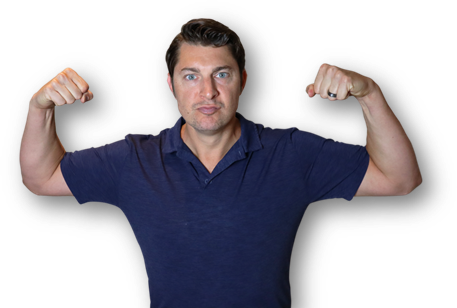Looking for Expert-Level VA Claim Answers?📱Call Us Now! 737-295-2226
You’ve probably been trying to ignore it, but that slight shaking in your hands, head, or voice is becoming harder to hide. You notice it most during simple tasks, like tying your shoes or drinking a glass of water.
It can be frustrating and even embarrassing. You’ve tied your shoes thousands of times—why is it suddenly so difficult? Many veterans assume tremors only affect older adults, but that’s not always the case.
Your essential tremor may be service-connected, and if it is, you could be eligible for an essential tremor VA rating and monthly disability compensation.
In this post, we’ll break down how the VA rates essential tremor, what diagnostic codes apply, how to prove service connection, and how to file a VA claim to get the compensation and benefits you’ve earned.
Summary of Key Points
- Essential tremor is a neurological condition that causes shaking in the body, predominantly in the hands, but also in the head, torso, and voice.
- VA ratings for essential tremor are assigned by analogy, based on the severity of symptoms and, in some cases, whether they affect the dominant or nondominant side of your body.
- You can receive VA disability for essential tremor if it’s directly caused by your service, caused by another service-connected condition, or if your service aggravated a pre-existing tremor.
Table of Contents
What is Essential Tremor?

Essential tremor is a neurological disorder that causes shaking in the hands, torso, head, voice, and legs, according to Johns Hopkins Medicine. There is little known about what causes essential tremor, other than it’s a neurological condition and has a possible genetic component.
Greatest areas of impact:
- Hands (most noticeable)
- Voice (trembling or shaking sound)
- Head (uncontrollable bobbing)
- Rarely impacts legs and feet
Characteristics of essential tremor include:
- Tremors develop gradually and worsen with age
- Tremors increase when you move and are less noticeable when at rest
- One side of the body is generally more affected than the other
- Can be worsened by some medications, caffeine, or stress
- Small amounts of alcohol can subside tremors
Essential Tremor VA Ratings
If the VA’s proposed VA rating changes go through, essential tremor will be given its own diagnostic code in the VA Schedule for Rating Disabilities (VASRD) under neurological conditions, making it easier to identify and file for compensation.
As of November 2025, the VA does not have a specific diagnostic code for essential tremor. It is commonly rated by analogy under Diagnostic Code 8515, paralysis of the median nerve when hand function is affected, with ratings from 10% to 70% depending on severity of symptoms and which side of the body is affected – dominant or nondominant (major or minor).
-
The table below explains how the VA currently rates essential tremor by analogy under Diagnostic Code 8515 (paralysis of the median nerve):
Paralysis of the Median Nerve VA Schedule of Ratings
| VA Rating Criteria | VA Rating % (dominant/nondominant) |
| Complete; the hand inclined to the ulnar side, the index and middle fingers more extended than normally, considerable atrophy of the muscles of the thenar eminence, the thumb in the plane of the hand (ape hand); pronation incomplete and defective, absence of flexion of index finger and feeble flexion of middle finger, cannot make a fist, index and middle fingers remain extended; cannot flex distal phalanx of thumb, defective opposition and abduction of the thumb, at right angles to palm; flexion of wrist weakened; pain with trophic disturbances | 70% / 60% |
| Incomplete; Severe | 50% / 40% |
| Incomplete; Moderate | 30% / 20% |
| Incomplete; Mild | 10% / 10% |
Note: These ratings are the general guidelines only; the VA may assign ratings differently depending on all of your symptoms and medical records.
Proving Service Connection for Essential Tremor

If you can service connect your essential tremors, either through direct or secondary service connection (or via aggravation), you may be eligible for VA disability benefits and compensation.
Direct Service Connection
However, if there was a specific event that you believe led to the essential tremor, you’ll need the following to prove a direct service connection:
- A current medical diagnosis of essential tremor;
- Documentation of an in-service event, injury, or disease; and
- A nexus (link) between #1 and #2 via competent medical evidence, such as a nexus letter.
Secondary Service Connection
A secondary service connection means that another service-connected condition caused your essential tremors.
For example, if you’re already service-connected for PTSD or TBI and those conditions triggered or worsened your essential tremor, you may be eligible for a secondary claim.
Service Connection by Aggravation
Service connection via aggravation means your pre-existing essential tremors were worsened by your time in service, or another service-connected condition worsened your non-service-connected essential tremor.
C&P Exam for Essential Tremor
After filing a claim for essential tremor, the VA may require you to have a claim exam, or a compensation and pension exam (C&P exam). The exam will go over your symptoms, diagnosis, and service connection.
The VA doesn’t require a C&P exam for all claims, but if they schedule one for you, it’s imperative to go. Without this exam, you could miss out on important medical documentation that could strengthen your case, or it could delay your claim.
Related: List of VA Mental Health C&P Exam Questions Revealed!
Conclusion
Essential tremor is an uncontrollable shaking in your body, most noticed in the hands during manual tasks. With a current diagnosis and the proper documentation linking your condition to your service, you can improve your chances of obtaining a VA rating and disability compensation.
Want Expert-Level Support for Your VA Disability Claim? WE GOT YOUR SIX!

- VA Claims Insider is the #1 most trusted name in VA disability claims.
- Work directly with a VA claims coach who can educate you through the claims process.
- 25,000+ disabled veterans have served in our membership programs since 2016.
- 30% average rating increase for veterans who complete our #1-rated Elite program.
- 4.7/5.0 average rating out of 5,500+ total reviews; over 4,500 5-star reviews.
FAQs | Frequently Asked Questions
Do essential tremors qualify for disability?
Yes. Essential tremors can qualify for VA disability if you can prove a service connection (direct, secondary, or aggravation) and you have the current diagnosis, medical records, and nexus to prove the connection. It’s commonly rated by analogy under Diagnostic Code 8515, paralysis of the median nerve when hand function is affected.
What is the VA rating for essential tremors?
The VA does not have a specific diagnostic code for essential tremor. Instead, it is rated by analogy, often under neurological diagnostic codes such as paralysis of the median nerve (DC 8515) when hand function is affected. Ratings can range from 10% to 70%, depending on severity and whether the dominant or nondominant side is affected.
What is considered an essential tremor?
Essential tremor is a neurological disorder that causes shaking in the hands, torso, head, voice, and legs, according to Johns Hopkins Medicine. It is most noticeable in the hands.
What is the VA diagnostic code for tremors?
The VA does not have a specific diagnostic code for essential tremor. Instead, it is rated by analogy to a closely related neurological condition.
Does PTSD cause essential tremors?
While there is no direct causation between PTSD and essential tremors, a study published by the National Library of Medicine indicates that essential tremors have been linked to depression, anxiety, and post-traumatic stress, as well as chronic stress.
About the Author

Katie McCarthy
Katie McCarthy is a writer and editor with experience in daily news and digital and print magazine publishing. She honed her editorial (and firearms) skills at Guns & Ammo before helping launch Black Rifle Coffee Company’s Coffee or Die Magazine as the managing editor. She holds degrees in English (BA) and public administration (MPA). Katie is a military spouse and word nerd who enjoys reading, hiking, camping, gardening, and spending time with her family.



